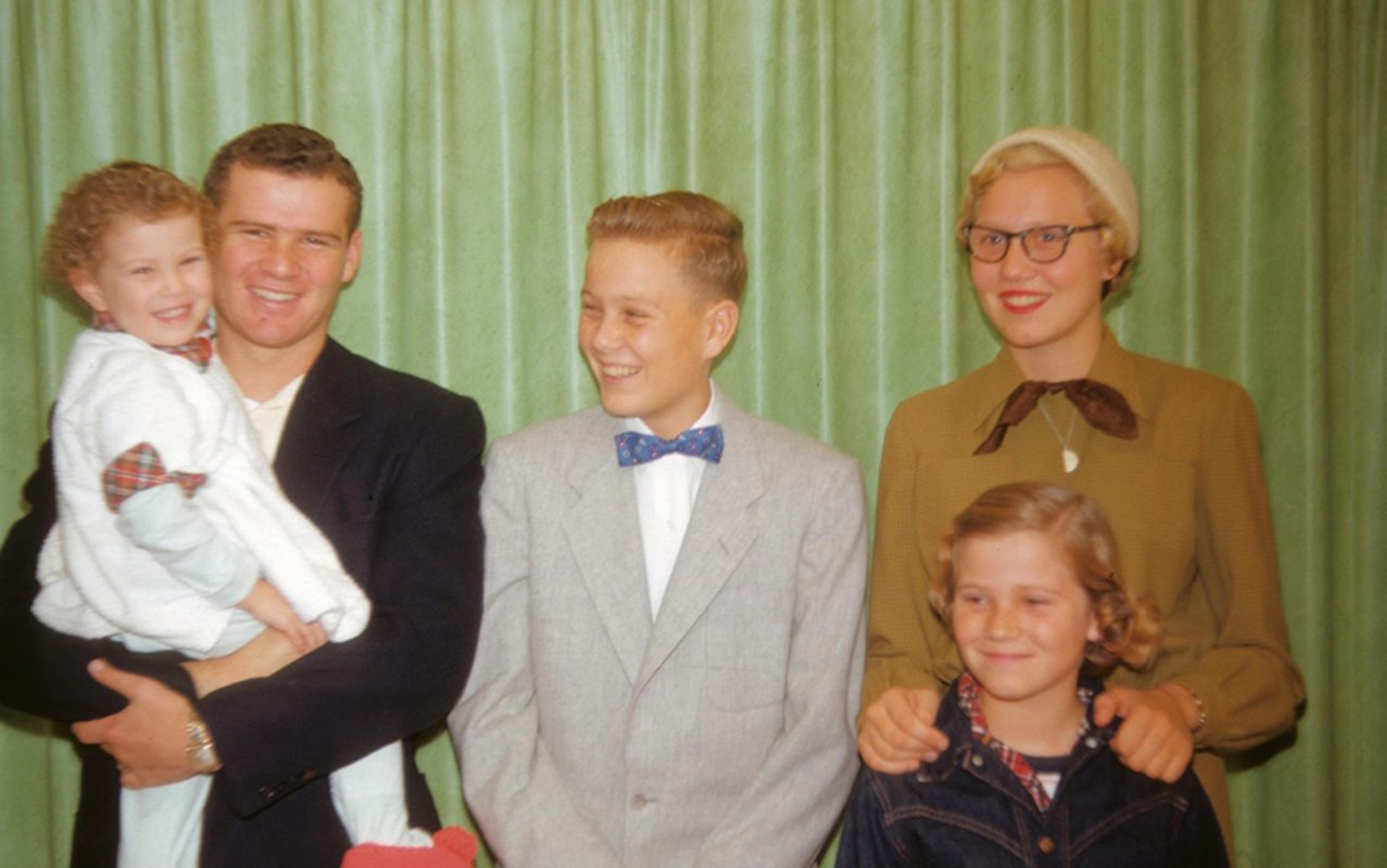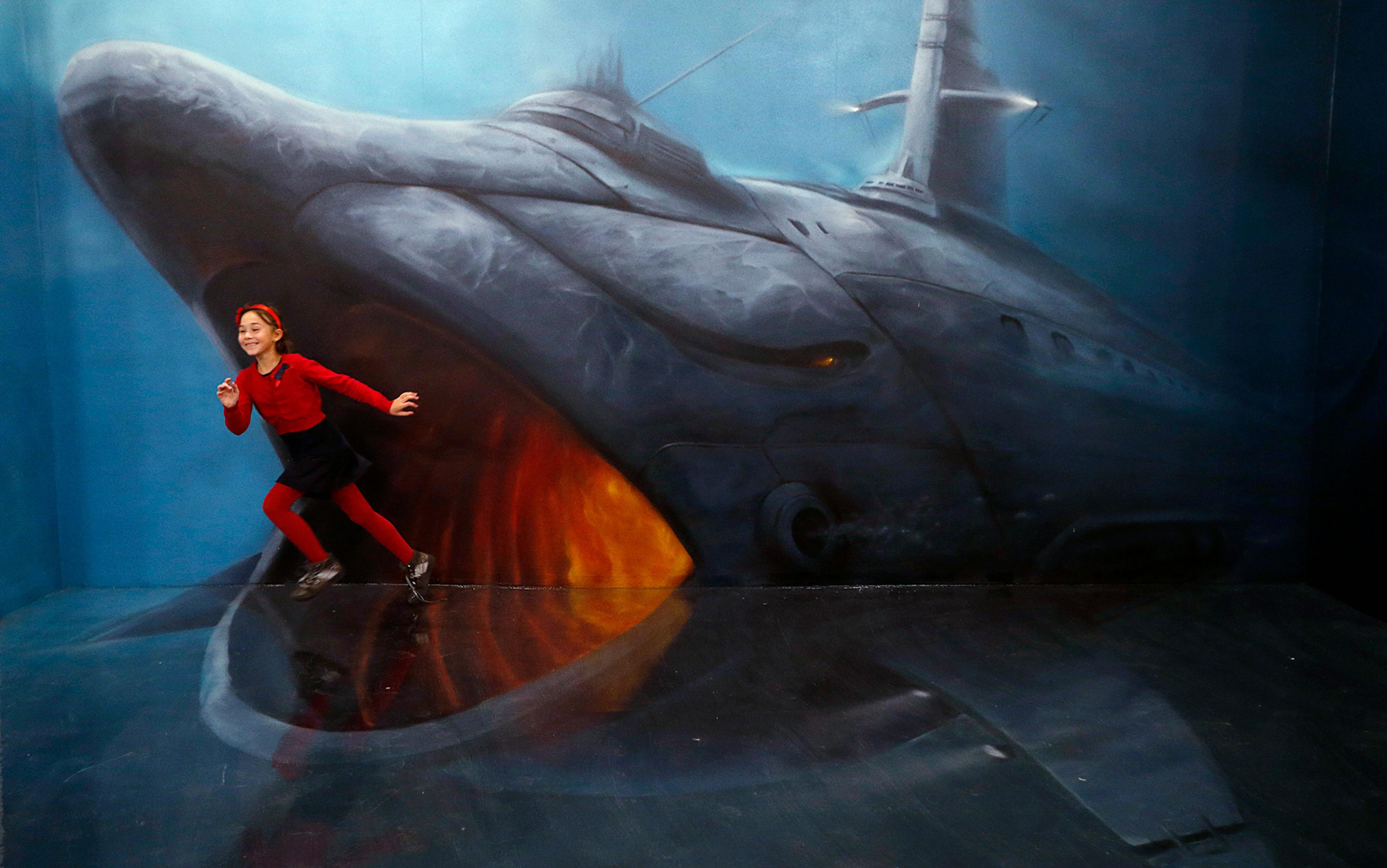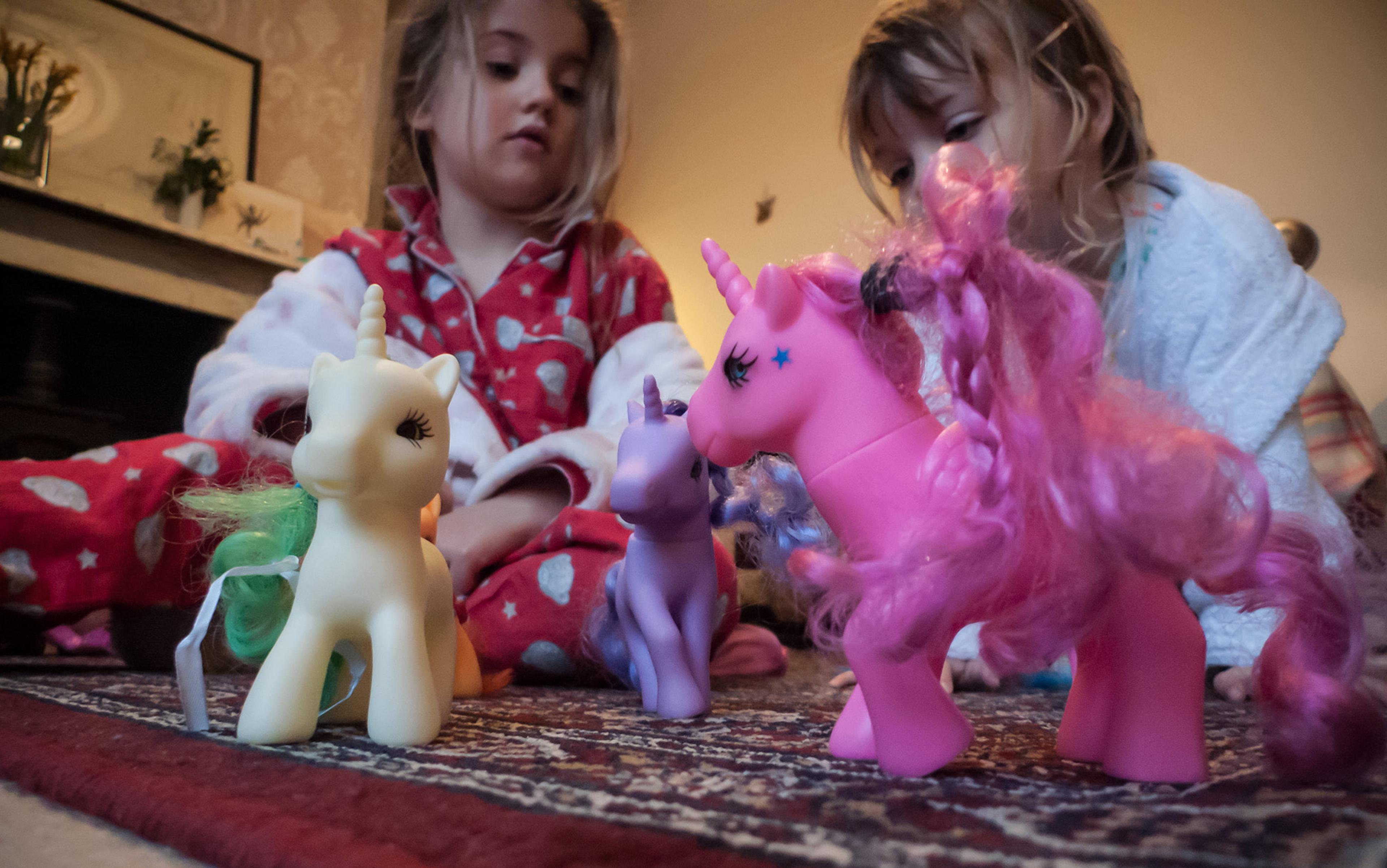No one in my family knows where those names came from, least of all me. Temmy was a boy, Clugga a girl, and I remember them now in the way you might remember beloved cousins not seen since childhood. They were my friends, constant companions. I can’t tell you what they looked like, but they were vivid to me then. I knew that I’d made them up, and yet they were emotionally vital and cognitively alive, physically absent but psychologically present. As a child, you don’t question your imagination; often, it seems to be both the safest and most interesting place of all.
My mother thinks Temmy and Clugga were born of self-defence (I was the youngest of four) and a need for company (my nearest sibling was six years older). They also contributed to an ingenious ruse to avoid practising the violin. I started learning the instrument young, aged three, and insisted that my imaginary friends learnt too, so my mother and I would sit in respectful silence as one after another practised their scales.
My mother, also the youngest of four, was almost irrationally patient and forgiving in the face of their demands. She made space for them in the car, and sympathised if one was sat on or accidentally left behind. As she tells me this now, I am bewildered. She was colluding with insanity, surely, sustaining an unreality that must have aggravated my family beyond all reason. There were moments, she says — as she sat listening to one of them play a violin piece only for me to say that they’d made a mistake and must repeat it — that she wondered if she might be going mad. But then she’d had an imaginary friend too, which probably helped.
When she was little, a small devil called Tarquin lived beneath her bed. He was half-demon and half-protector — my mother was terrified of him, jumping into bed to avoid his clutches, but she also knew that he guarded her as she slept. My Temmy and Clugga weren’t nearly as interesting or ambiguous — more like bland ego extensions, willing and obedient minions who could be corralled into whatever laborious or mundane fantasy I had concocted that day. As far as I can remember, there were a lot of meals, which included protracted displays of laying the table and clearing up afterwards. The potential for an imaginary paradise, free of chores, evidently passed me by.
Not long ago, I took part in some research into imaginary friends undertaken by the psychologists Karen Majors and Ed Baines at the Institute of Education in London. There was something a little unnerving about filling in a questionnaire, at the age of 31, on the subject of Temmy and Clugga. Why did I think I’d created them? How old was I when they arrived? How long did they last? Had there been any disadvantages to having them?
I worry about the quality of the guidance offered by Twingle Twanx (but perhaps I malign the wise young Martian)
Most of these I had no definite answer to: they were just there, an unquestioned, unexplained fact. But I was clear on the disadvantages — there were none. At the time, perhaps I had the odd embarrassing episode of being caught mid-invisible-conversation by someone beyond my family who was yet to be inducted into its imaginary branch, but I don’t remember any humiliation, only the happiness of always having friends around. Now, I feel almost proud of them, in the way that it’s smugly pleasing to look back at your childhood and detect something vaguely exceptional about it.
Yet there’s nothing remotely exceptional about imaginary friends — many children have them, and they generally conform to common patterns. According to Majors and Baines’s survey of 594 adults who said they’d had imaginary friends, 81 per cent had lost them by the age of 10 (this made me worry a bit for those who doggedly carried theirs into secondary school). The vast majority of imaginary companions came in human form (68 per cent), though there were some animals too (15 per cent) and a small number, of whom I immediately became jealous, who had friends with magical powers (seven per cent).
Inevitably, it’s the snippets of anecdote in the research that bring it to life. Like the lucky child who had been friends with Twingle Twanx, a little Martian. Or the one who had invented a varied cast including Cowmitt, a grandfather; Kerry, a young girl with a strange accent; and Budda, ‘a young Indian boy in a smart suit’. Only a tiny minority had friends with negative characteristics, who teased them or caused trouble. Most were simply companions, there to help populate their pretend worlds, play games or offer comfort. A smaller and more poignant proportion helped their creators overcome loneliness (41 per cent), and escape reality (38 per cent), or provided guidance (23 per cent), though I worry about the quality of the guidance offered by Twingle Twanx (perhaps I malign the wise young Martian).
But memory distorts. As adults, our understanding of our imaginary friends and the reasons for their existence is inevitably shaped by the broader feeling we have about our childhoods. A distant recollection is very different to the account of a child still in the thick of the imaginative experience. I remembered that a former colleague had once told me about his son, Joe, who’d introduced a cast of invisible characters to their family. One Friday afternoon, Joe and I spoke on the phone:
Joe: There’s a baby called Rocky and he has glasses. There is someone called Tom and there’s someone called Mary, and they’re married, and they’ve got Rocky. They live in, well I made up, a planet called Sweek.
Me: What’s it like there?
Joe: Very hot. All the time. There are countries and lots and lots of factories all round it.
Me: What do the factories make?
Joe: All sorts of things. Scooters, bikes, even food.
Me: And what do Mary, Tom and Rocky do?
Joe: Tom is a shopkeeper and Mary is a photographer. Rocky just goes to school.
Me: Do you go and see them or do they come and see you?
Joe: I go there.
Me: So how do you get there?
Joe: I sort of think that Sweek is actually my room, because I can’t go in a spaceship and go to Sweek, 1) because I don’t have one and 2) because Sweek isn’t real, it’s just my imagination.
There was something about that numbered list, and Joe’s matter-of-fact tone — I could almost hear him sigh as he patiently explained the mechanics of his imagination to a novice — that revealed a wonderfully blunt pragmatism about a fantastic situation. Joe, aged six, is fully aware that Tom, Mary and Rocky aren’t real, that he is their author, and that his room — his private space — is where they come to life. But they’re clear in his mind: Tom and Rocky both wear glasses. Tom has orange hair; Rocky’s is black and spiky; and Mary, the photographer, has hair down to her shoulders. Sweek has its own language, Screek (Joe taught me to say Yes and No — Lute and Do) and some magical properties: ‘Like, sometimes, people who are really special, like the vicar and me, they can make a force field that stops bad people going away.’ I never found out who the vicar was.
Dr Majors has been investigating the subject of imaginary friends for some years now, interviewing both children and adults. Her mother told her that, when they were children, she and her sister would fight over who’d sit next to the imaginary tiger at the dinner table, though she has no memory of him. There is, she says, no shared characteristic of the children who invent companions — apart from the capacity for rich imagining. Many are like Joe, whose friends are principally for fun and entertainment, but she cites examples of children with speech and learning difficulties, Down syndrome and autism (who are often assumed not to have significant capacity for imagination or empathy), as all having imaginary friends.
The reasons that children create imaginary friends are as varied as the children themselves. Majors refers to the work of Donald Winnicott, the mid-20th century psychoanalyst and paediatrician, for a potentially unifying explanation. Winnicott developed the theory of the ‘transitional object’ — the comfort blanket or toy that reassures a child when she is alone or trying to sleep. Imaginary friends, it is thought, are part of the same family — they help children to find a sense of themselves, and accompany them through crucial years of development and adjustment as they become their own individual beings, separate from their mother. They are by definition temporary: there to serve a purpose, and then discarded.
A work of fiction, then, can only be successful if it is animated by some living energy distinct from the controlling hand of the author
In her interviews with children, Majors noticed a marked difference between those, like Joe, who were still in the midst of their imaginary friendships and those who had recently left them behind. The newly emerged didn’t want to discuss their imaginary friends at all — not necessarily out of embarrassment, but because they were simply no longer around, and therefore irrelevant. The experience, as she put it, had gone ‘underground’ — the sad moment that signals the onset of self-consciousness, when the imagination starts to limit itself, sated by reality. The child simply didn’t need the imaginary friend any more — she’d probably made more real friends at school, and felt more confident out in the world.
So what happens to the imaginary friends? They are abandoned, frozen in time, consigned to memory and anecdote. But our imagination doesn’t die with them. A study by the University of Oregon psychologists Marjorie Taylor and Candice M Mottweiler in the American Journal of Play from 2008 asked children with imaginary friends where the friend went when he or she was not with the child. ‘He goes into my head,’ said a five-year-old boy. And another: ‘He goes in my mind and the world in my mind is called Neoland … I have two lands in my mind.’
We all have two lands in our minds, I suspect, and they both live on long after our imaginary friends have faded. One part of us marches forth into the world and plays along, working and striving and performing as a sane and dutiful citizen, sibling, parent and friend. And then there’s the more lawless part, the second land that unfurls behind the scenes, gives space to wilder dreams or to thoughts less explicable by language, unhooked from reality. We do not, just because we grow up, lose our capacity for fantasy, or imagination; it simply comes out in other ways.
There are some examples of imaginary friends persisting into adulthood: Kurt Cobain of the band Nirvana had an imaginary friend called Boddah when he was a boy, and it was Boddah to whom he addressed his suicide note at the age of 27. A few adults in Majors’s research revealed that their imaginary friends had remained as some sort of presence throughout their lives. But perhaps that second land, the one of uninhibited fantasy, just changes shape and finds itself played out in adult unrealities — in the diversions we seek through novels, films, art.
The percentage of writers in the study who reported that they had imaginary friends as children was more than twice the average
But consumption is not the same as creation: it’s one thing to indulge in someone else’s story, and another to invent that story oneself. A study led by Oregon’s Marjorie Taylor, published in the journal Imagination, Cognition and Personality in 2003, suggests that the closest parallel in adult life to the invention of imaginary friends is the fiction writer’s creation of character. The study’s authors call the phenomena ‘the illusion of independent agency’, which ‘occurs when a fictional character is experienced by the person who created it as having independent thoughts, words, and/or actions’. An author invents a character on the page, and before long feels like that character has a life of its own, and that the author is simply there to record its independent decisions and movements.
Not long ago, I interviewed the author Hilary Mantel and she explained her writing process as being similar to that of a medium, like the character of Alison in her novel, Beyond Black (2005). This is how Mantel describes Alison at work: ‘She starts a peculiar form of listening. It is a silent sensory ascent; it is like listening from a stepladder, poised on the top rung; she listens at the ends of her nerves, at the limit of her capacities … The skill is in isolating the voices, picking out one and letting the others recede.’
Mantel described herself as ‘skinless’, so highly sensitive that she can become aware of other beings who seem to already exist beyond the limits of her own mind. She does not consciously invent her characters so much as tune in to their presence. In her memoir Giving Up the Ghost (2003), she reveals that she spent much of her time as a child pretending she was a medieval knight, obsessed with King Arthur and his court. Her adult occupation is simply an advanced form of her childhood game: she still spends her time in the vivid company of imagined historical characters, but is now able to commit that fantasy to the page.
E M Forster had it slightly differently. In Aspects of the Novel (1927), he wrote: ‘The characters arrive when evoked, but full of the spirit of mutiny… They “run away”, they “get out of hand”: they are creations inside of a creation, and often inharmonious towards it.’ Not only that: if the author tries to keep his characters too ‘sternly in check, they revenge themselves by dying, and destroy [the book] by intestinal decay’. A work of fiction, then, can only be successful if it is animated by some living energy distinct from the controlling hand of the author. The characters must have their own agency, and rebel.
The adult writer, like the child with her chorus of imaginary friends, knows that his characters are fictitious. Both are aware that these people are born of their own minds, but both also have enough faith in the imagination to respect its offspring as in some ways autonomous. Taylor suggests that both adult and child have developed ‘expertise in the domain of fantasy’. That is, they have become so good at imagining their friend or character that they are no longer conscious of the process of creation — the friend or character seems to arrive automatically, fully formed. There’s another link, too: the percentage of writers in the study who reported that they had imaginary friends as children was more than twice the average. These people have been pretenders all their lives.
Towards the end of my phone conversation with Joe, I asked what he thought would happen to his imaginary friends, how he thought they might change with time. ‘I never think that anything’s changing,’ he said. ‘They’ll always be there, they’re never going to die. Because people in Sweek never die, that’s how special Sweek is.’ I might have thought, once, that this was yet another quirk of a child’s fantasy life: how sweet that he thinks his invented world and friends are immortal. But in a way he’s right. Fictions could outlast every one of us.






